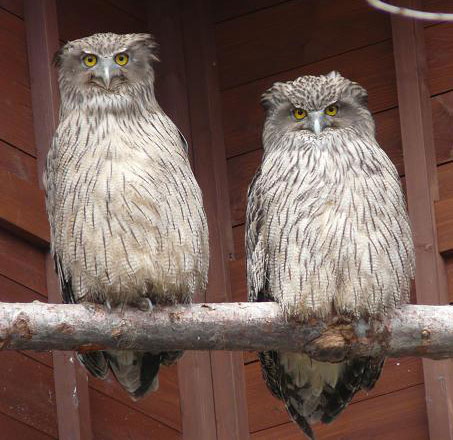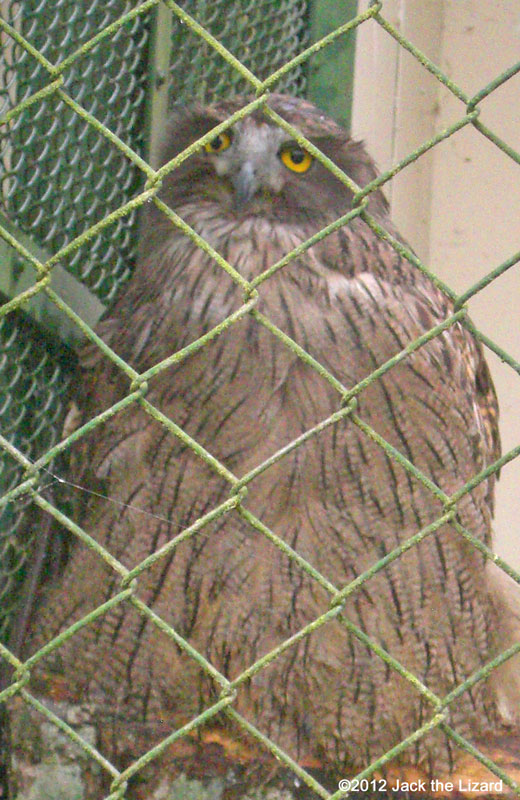
|
|
|
|
The Largest timid Owl
|
Blakiston’s Fish Owl is one of the largest owls in the world; their wing span reaches about 6.3ft (180cm). They are found in northeastern China, Korea, Sakhalin in Russia and central east of Hokkaido in Japan. Although only few live in Kushiro shitugen, main population concentrates in Shiretoko Peninsula of Hokkaido. In Japan Blakiston’s Fish Owls are critically endangered species, only about 140 of them are left in the wild. Several artificial nests are set in the large old trees for them to breed and masu salmon are provided by human as winter food.  |
|
|
“Blakiston’s Fish Owls need large trees with more than 40in diameter trunk such as oak and elm, because they breed in the hollow of those trees. If they cannot find large tree, they will not breed, simply because their body does not fit in small trees. Unfortunately old big trees were cutting down as the development proceeded. Then the population declined.” Wildlife management and health officer, Koji Ono said. Ono added that food shortage is also one of the reasons of declining population. “I don’t think that they are swift hunter. I observed that they had waited for long on the tree along the river until fish pass by. They can hardly catch fish with their hunting style now. Once the rivers were full of fish as if black water flows surface, but those days are gone” |
|
The recovery plan of Blakiston’s Fish Owls already has started to solve this situation. They are closely related with rivers and have their territory at a riparian forest. So the first thing to be done is planting trees to preserve and recover the riparian forest. What’s more in cases like that only female birds live in some habitat, males are introduced to mate with.  |
|
|
|


